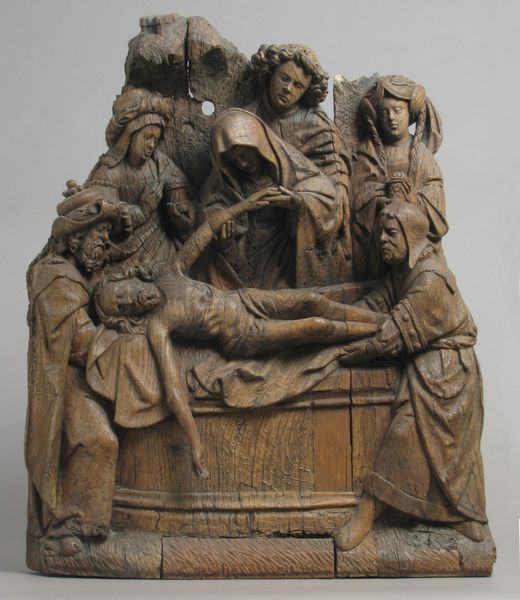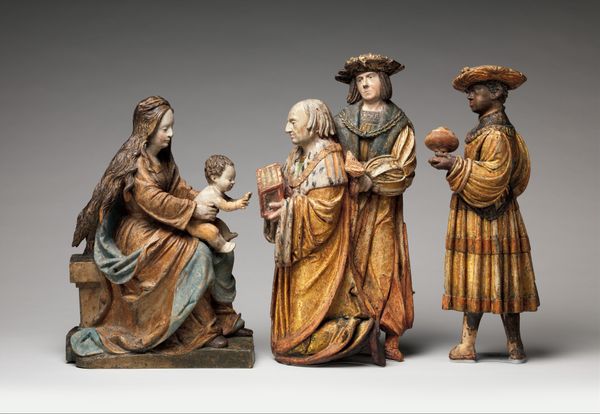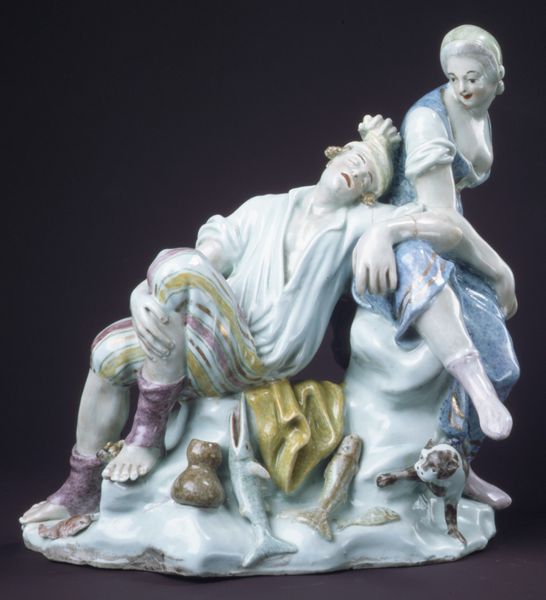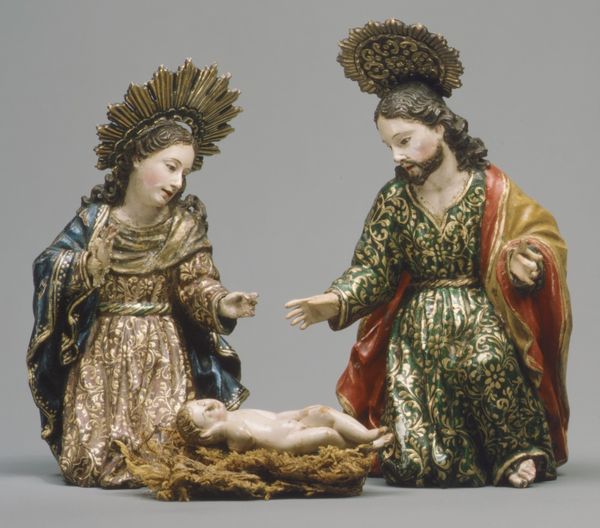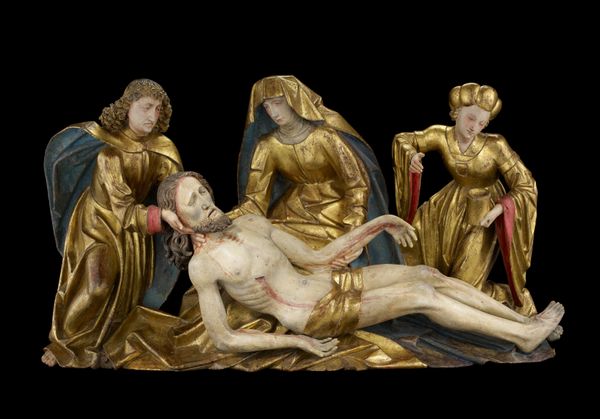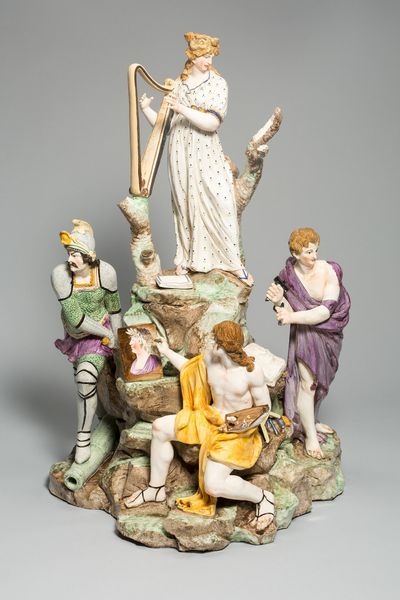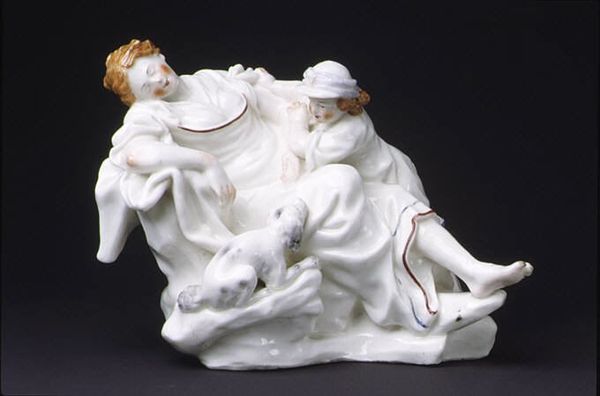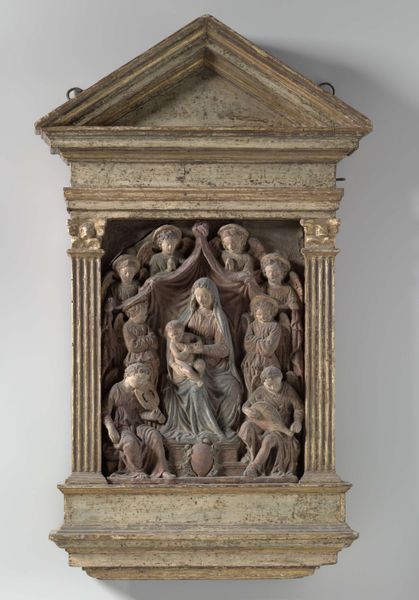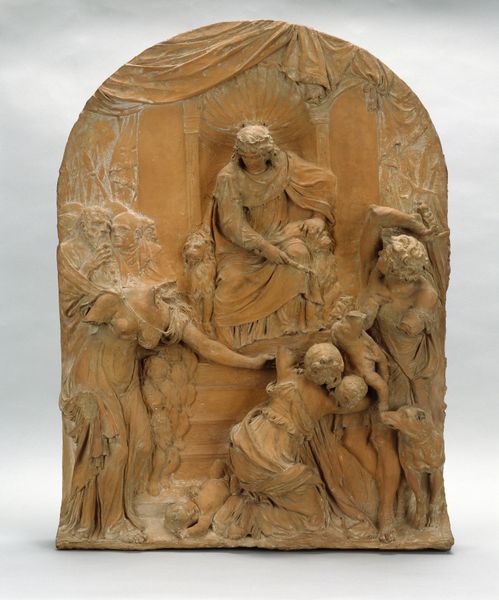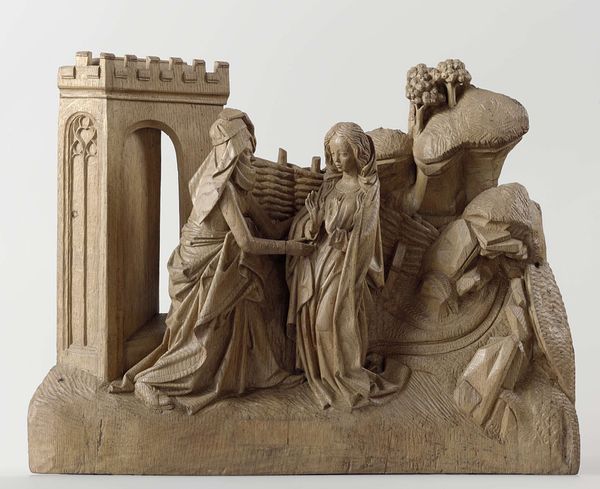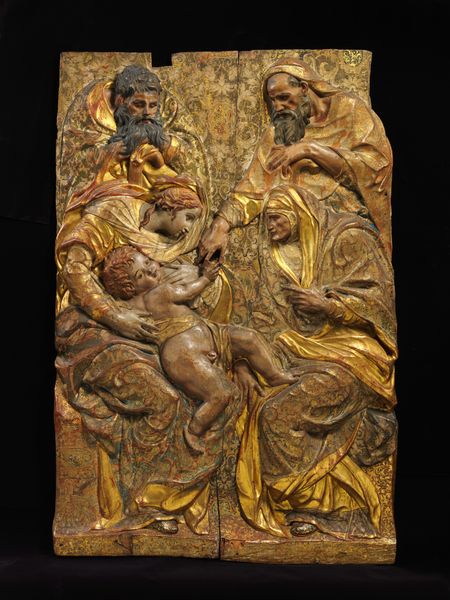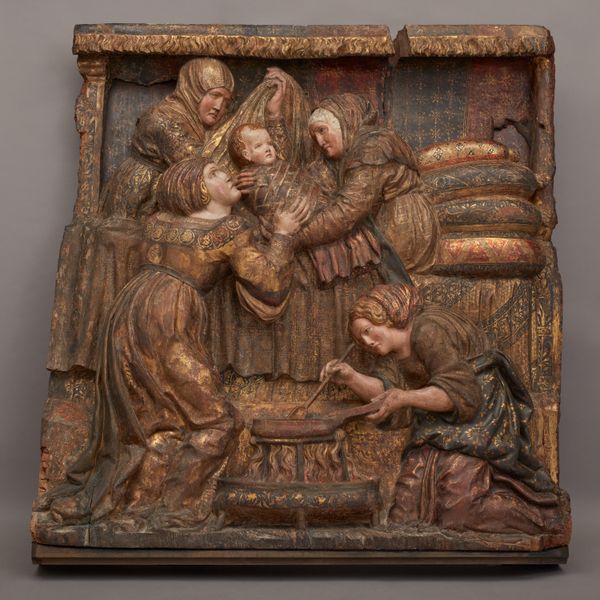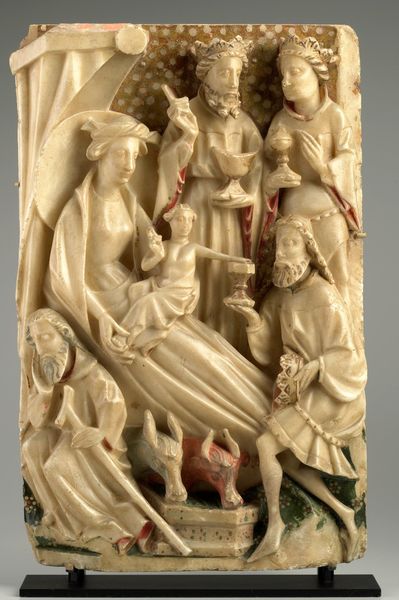
sculpture, wood
#
baroque
#
sculpture
#
figuration
#
sculpture
#
group-portraits
#
wood
#
history-painting
#
decorative-art
#
christ
Dimensions: Overall (confirmed): 19 1/2 × 26 × 17 in. (49.5 × 66 × 43.2 cm)
Copyright: Public Domain
Luisa Roldán, also known as La Roldana, crafted “The Entombment of Christ” in Spain using terracotta, a humble material, yet one capable of great expressiveness. Terracotta, meaning “baked earth,” is a type of earthenware clay fired to a relatively low temperature. In this sculpture, the inherent qualities of terracotta – its ability to be molded and to hold fine detail – are fully exploited. The soft clay has allowed Roldán to create nuanced facial expressions and intricate folds in the drapery. After firing, the figures would have been painted, a process that further enlivens the scene. Roldán came from a family of sculptors, so she acquired mastery of the medium through years of practice. Though she was appointed as the first female sculptor to the royal court, terracotta was considered less precious than marble or bronze. Choosing this material allowed her workshop to produce these striking devotional objects efficiently. By considering the material and the process by which it was made, we can appreciate the artistry involved in this sculpture, and how it transcends the traditional hierarchy of art.
Comments
No comments
Be the first to comment and join the conversation on the ultimate creative platform.

